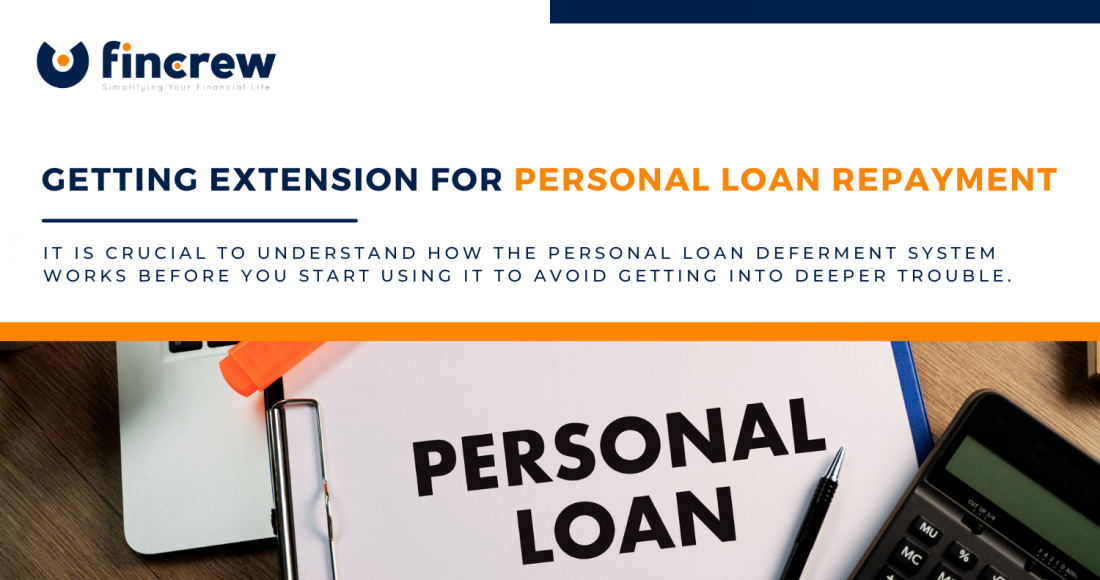Life can be unpredictable at times. If you find yourself suddenly unable to make one or more of your loans, it’s best to act sooner than later. The sooner you move, the minor damage you sustain, and the easier the eventual cleanup is if you do not allow things to deteriorate further. There are times when the solution is simple. If you cannot afford your car payments, you can sell your car and try to find a less expensive (but safer) vehicle or do without a car altogether. Indeed, things aren’t always easy, but you can stay on top of things by using specific strategies. If your lender allows it, the best option is to defer or extend your loan repayments until your finances are in order again. It is crucial to understand how the personal loan deferment system works before you start using it to avoid getting into deeper trouble.

What Is Personal Loan Deferment?
The term “deferment” refers to a pre-approved temporary break from making payments on your debt, such as a personal loan. If you need a deferment, you will need to speak to your lender and explain your situation. For example, you lost your job, lost your hours at work, were affected by a national emergency, or needed expensive medical care. The lenders typically defer payments for borrowers who are experiencing financial hardship. Most lenders are still willing to work with you, even though deferment isn’t mandatory on personal loans. However, profit-wise, they make more sense to pre-approve a borrower for a temporary break in payments than to initiate collection proceedings.
How Personal Loan Deferment Payment Works
By deferring payment, you agree to postpone that payment. For instance, if you get a one-month deferment and originally planned to repay your loan in November 2021, you would now have to repay it in December 2021 (assuming no further deferrals exist). You must understand the terms of any deferred payments you might get from a lender. In particular, you need to know precisely when your deferment officially begins and when it ends. Knowing these two dates is vital because regular payments should be outside the deferment period. Suspensions are in one-month intervals usually, but they can last longer. Suppose your next monthly payment is due on Oct. 1, and your deferment starts on Oct. 2; you’ll still have to make the payment in October.
After the end of a borrower’s deferment period, a borrower who is still experiencing financial problems can contact the lender for another deferment. Deferments might be limited in some lenders’ policies, while others could get a grant on a case-by-case basis. Your lender may only grant deferments at monthly intervals, for example, so you’ll need to keep in touch with them each month until you can make payments again or find another solution.

Alternatives To Personal Loan Deferment
If your lender offers it, loan deferment can be a great option. However, it is not your only option. You can also try these options if your lender doesn’t offer deferment or if you’d instead try another:
Request a Modified Payment Plan From Your Lender
A deferment is technically a modification to your payment schedule. If your financial setback isn’t only temporary, you might be better off asking your lender to extend the duration of your loan. In this way, payments will be over for a more extended period. The long-term cost is higher, but your monthly payments are smaller and easier to budget.
Loan Refinancing
Take your business to another lender by refinancing your loan if your lender won’t modify your payment plan. While you’re at it, you may even be able to get a lower interest rate. To qualify for better terms, you may be required to have a good or excellent credit rating to be eligible for better times.
Consult a Credit Counsellor
If you have trouble working with your lender and know you can’t make your payments right now, speak with a credit counsellor. A counsellor can also assist you if you are unsure whether a moratorium is a suitable option for you – or if you would prefer an alternative.






